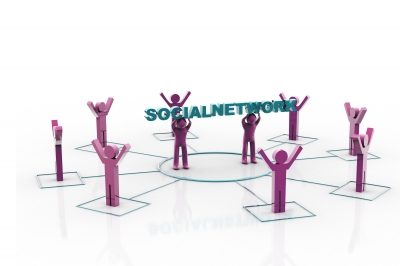Social Networking has always existed in different forms. In the distant past, people communicated face-to-face or wrote letters to each other. With the advent of the electronics age, social networking took different forms: phone calls, emails, texting, IM, etc. So what will be the next evolution in Social Networking? The introduction of Facebook changed the way we communicate from a one-on-one to a one-to-many, and the use of Twitter has pushed this even further. People now have the ability to “follow” specific people or discussions. Now when one person states their opinion, it is heard by hundreds, thousands or even millions. I read somewhere that Brittany Spears has more Twitter followers than a half a dozen countries in Europe have people. (Makes you stop and think about some of the implications of having that many “followers”.)
With the advent of Social Networking, an ordinary person has the ability to reach large numbers of people with minimal effort and resources. And the people you reach have an opportunity to talk back and share their opinions. The power to sway mass opinion is now available to everyone. Companies have recognized this phenomenon and have tapped into this network. At first, most companies viewed this as just another form of feedback or input on their performance. But remember, true social networking is “two-way” communications. Smart companies have recognized this and are using social media outlets to talk directly with their end consumers, with minimal efforts and cost.
In a previous article “Why IT Transformations Fail”, I said one of the reasons IT Transformations efforts fail is because of lack of communications. My colleague likes to use the phrase “Command and Control”. The days of being able to issue an order and expect it to be blindly followed are over. People want to understand “why” things are being done. They need to know the reasons for changes, and they want to ask questions. So, communication is critical to any Transformation effort. But, a lot of companies think that if they create a Web Site, print Newsletters, send emails, they have accomplished this task. A few years ago that was true, but today’s generation communicates very differently. They “text”, “tweet”, “friend”, write on someone’s wall, etc. All of which is a two-way dialog. During a Transformation, companies need to establish this two way dialog with their people.
So the question is “how”? I am sure that most companies do not want the details of their IT Transformation on Facebook or tweeted to the world. There are tools that almost every company has that can serve the same purpose. For example, in Microsoft SharePoint, companies can create a discussion dialog that allows people to communication with the Transformation Team and with each other. Not the same as Facebook, but you can “write on a SharePoint wall”. You can also use internal Web Pages that support Blogs or Forums that to provide a similar functionality.
Almost every company uses some form of internal / external Instant Messenger (IM). Although this is not the same a Twitter, you can simulate some of the functionality. As long as your IM software will deliver messages to offline people when they login, it will function like a “tweet”. In addition, most IM software will allow you to create “chat rooms” that will allow people to communicate with each other on-line and with your Transformation Team.
There is one major drawback of using these tools, you must being willing to commit some of your Transformation resources to monitor and respond to people. The worst case scenario would be to put these tools in place and not have the Transformation Team use them. You would have created a channel for people to spread “rumors” about the program. We all know how accurate rumors are. Plan on having your entire Transformation Team, and even your IT Leadership, use these tools on a regular basis. You might be surprised at how effective some of the techniques can be.
Remember, smart companies are already using social networking tools to reach the end consumer. Someone they have had limited contact with, unless it was to resolve a complaint or conduct a survey. Now companies can watch trends and opinions about their products and services as they develop, and hopefully correct any mistakes before they become too severe. To me, that sounds like a pretty important objective for any Transformation effort.
About the Author:





